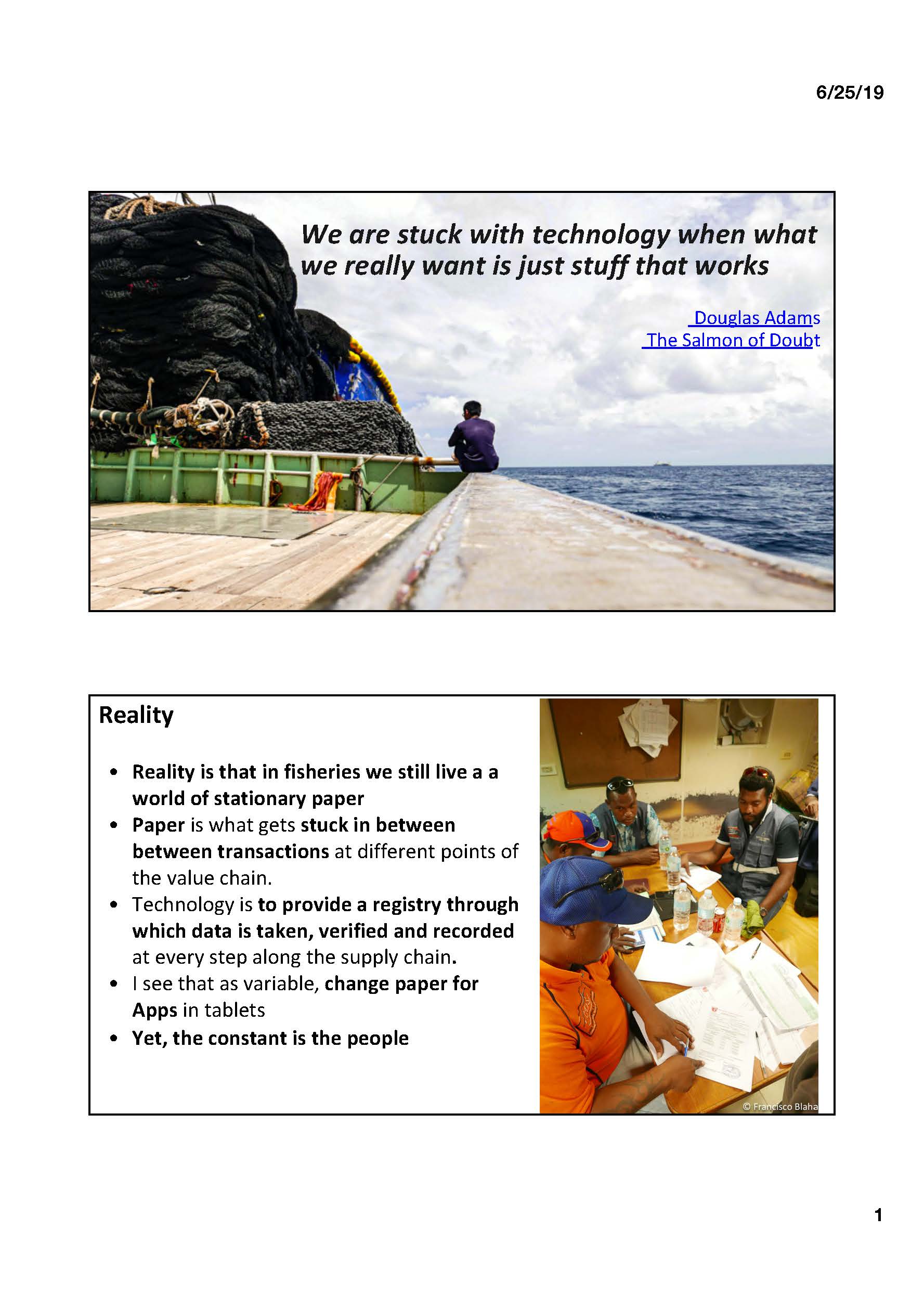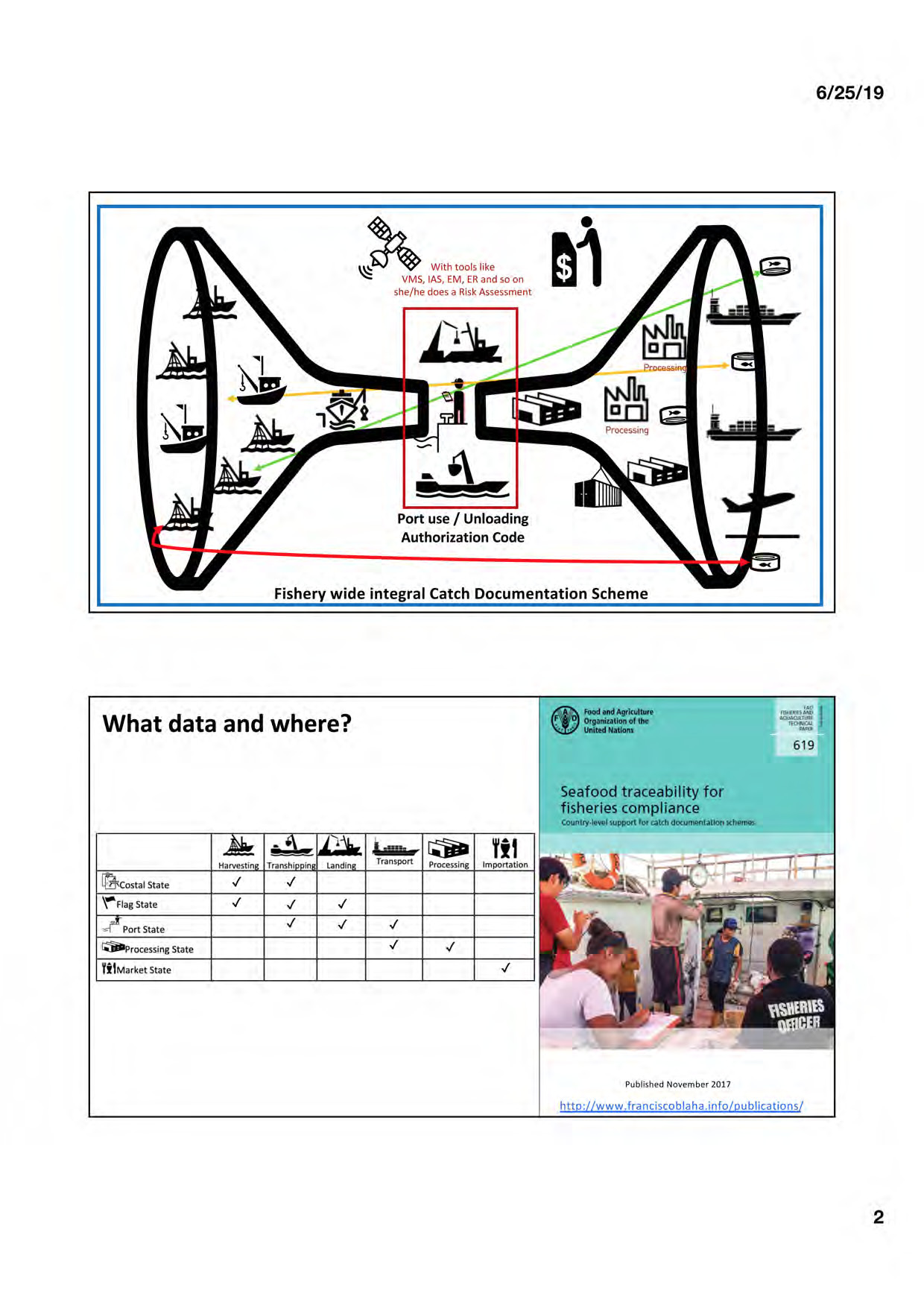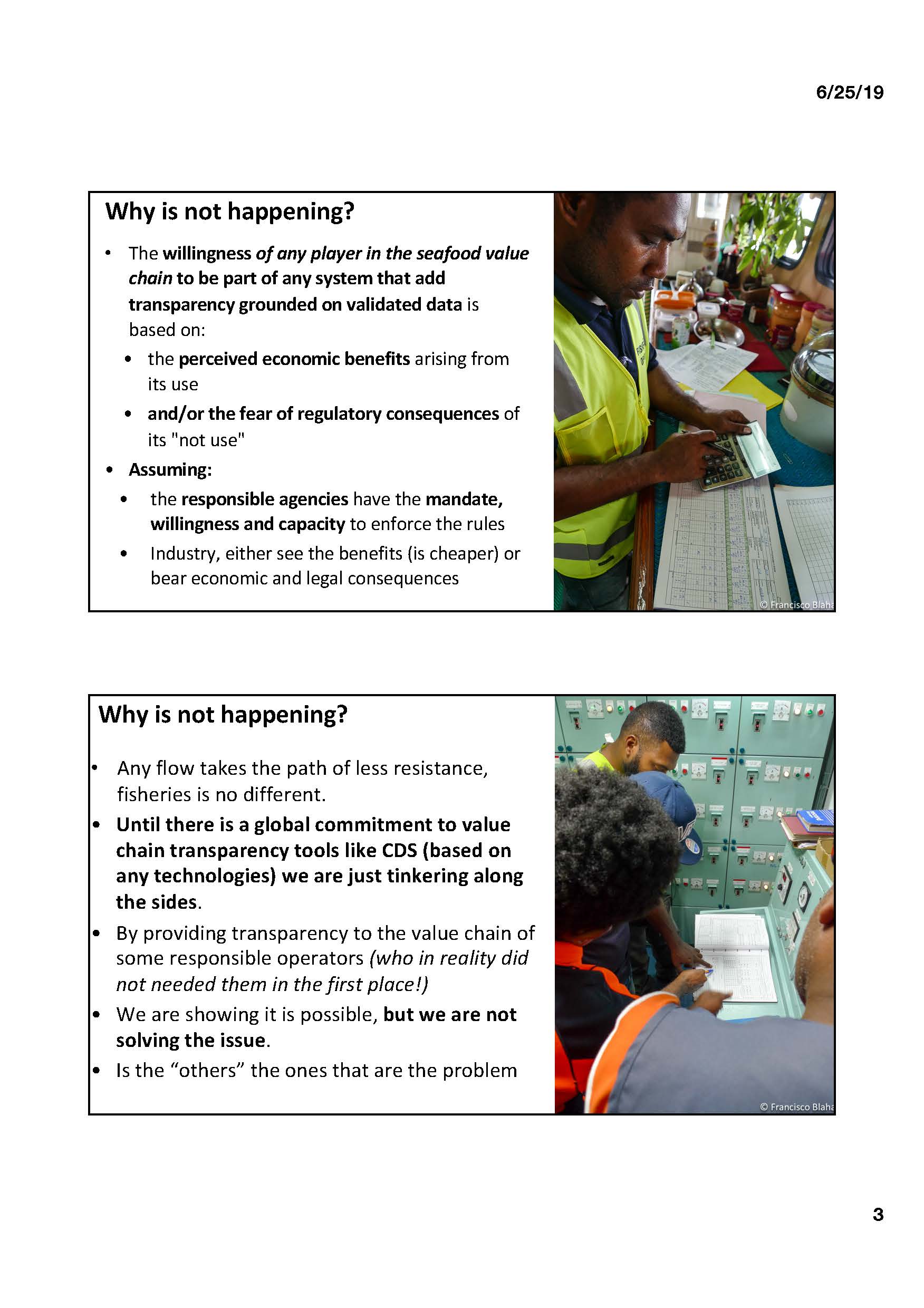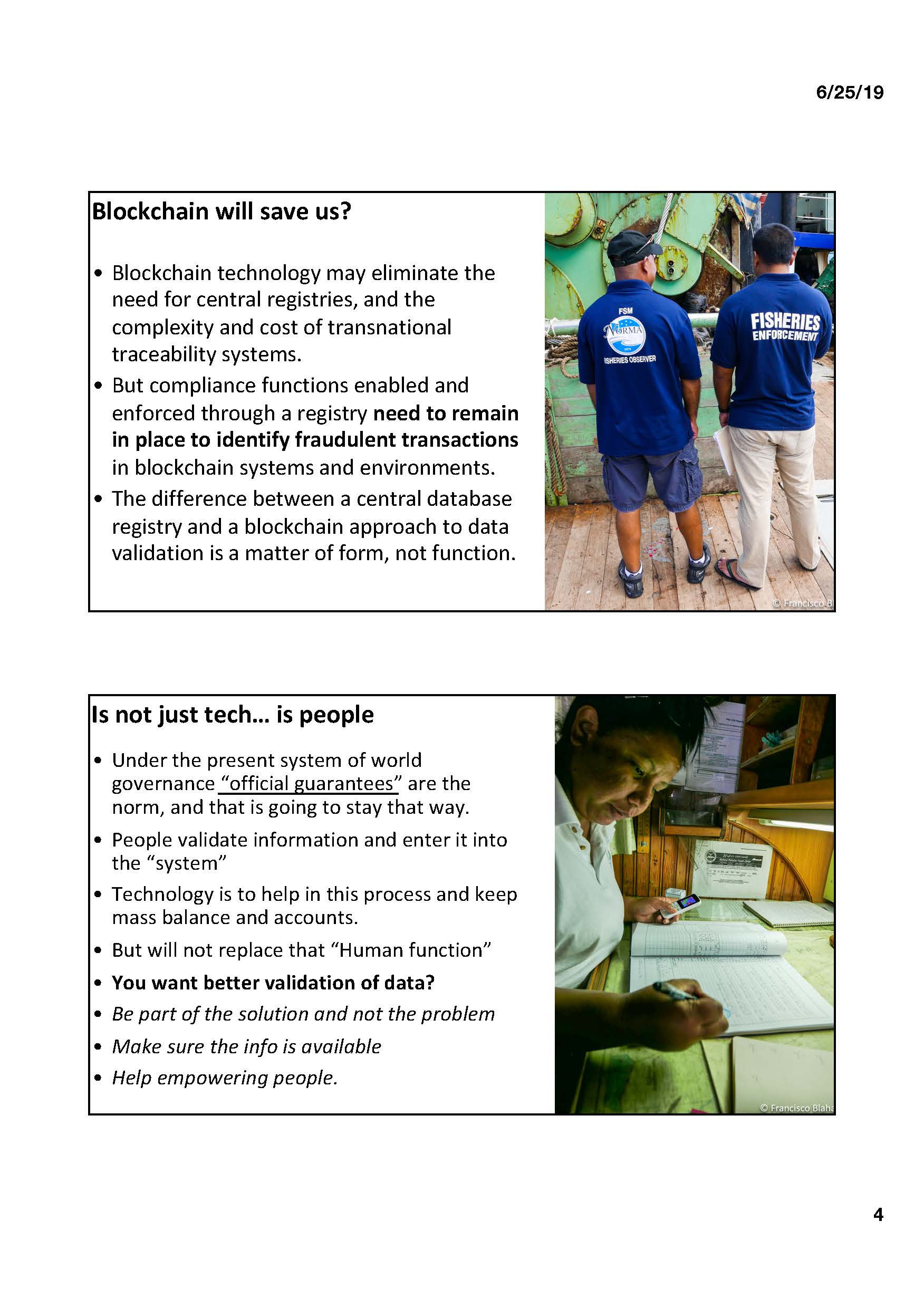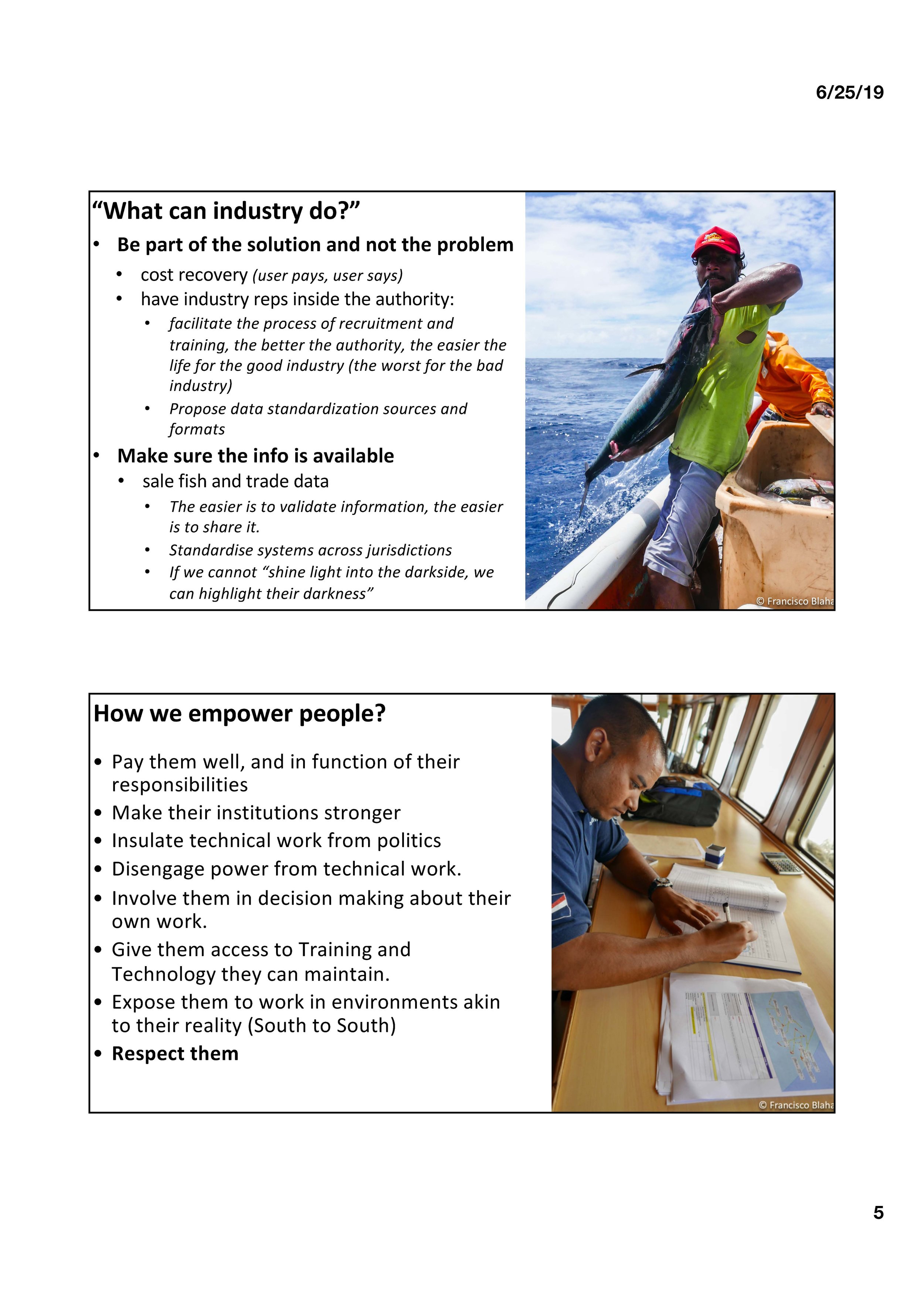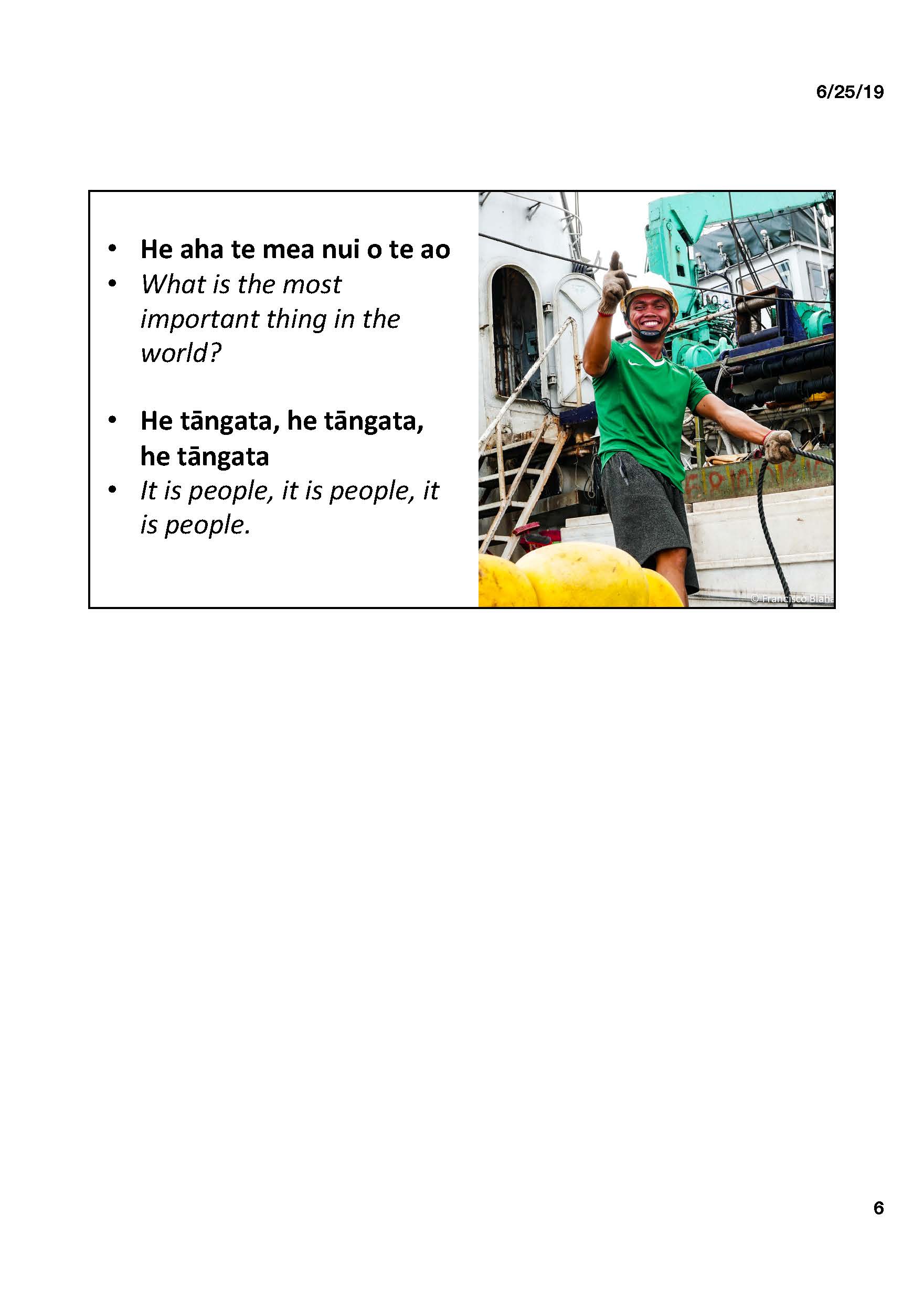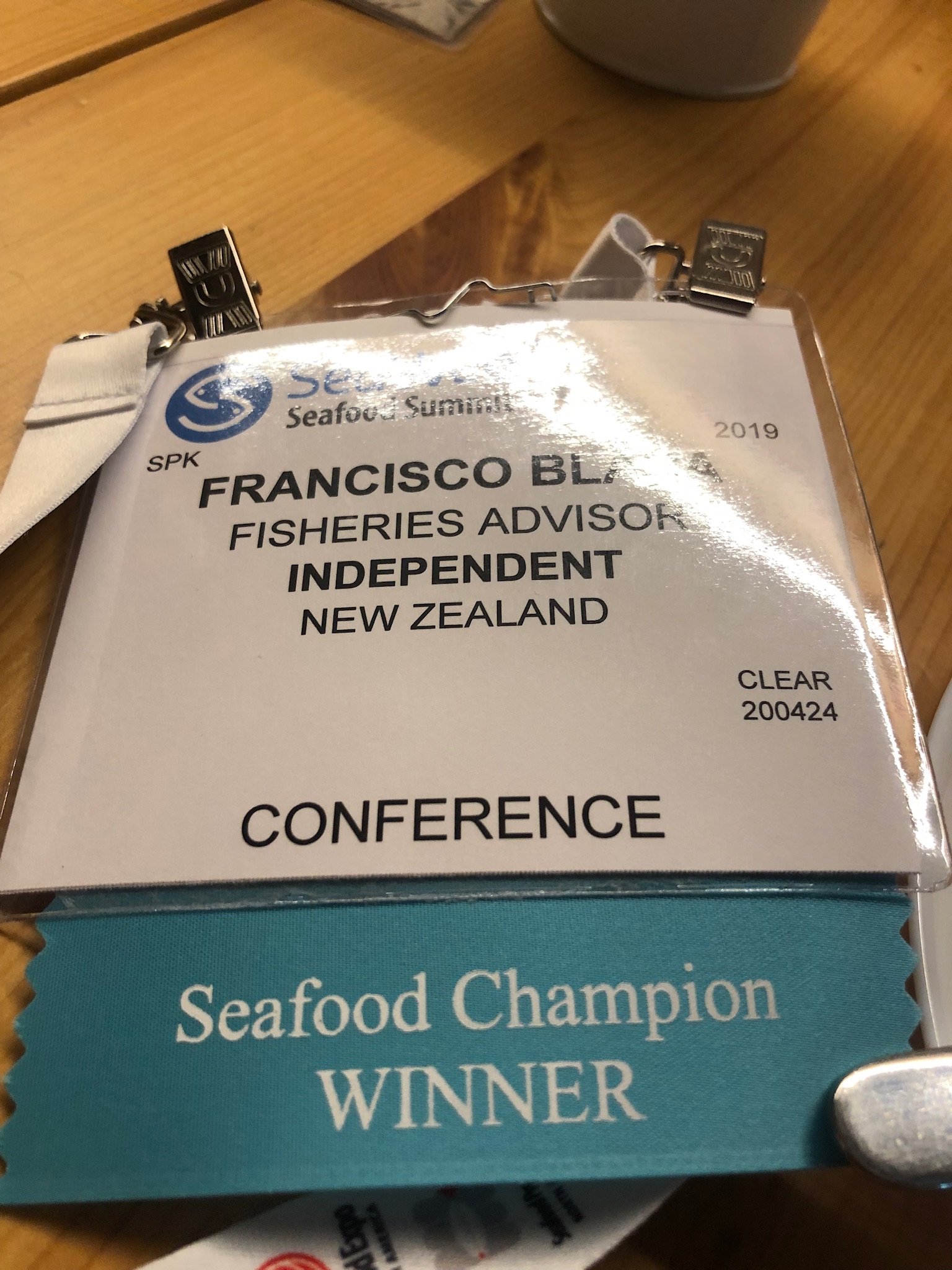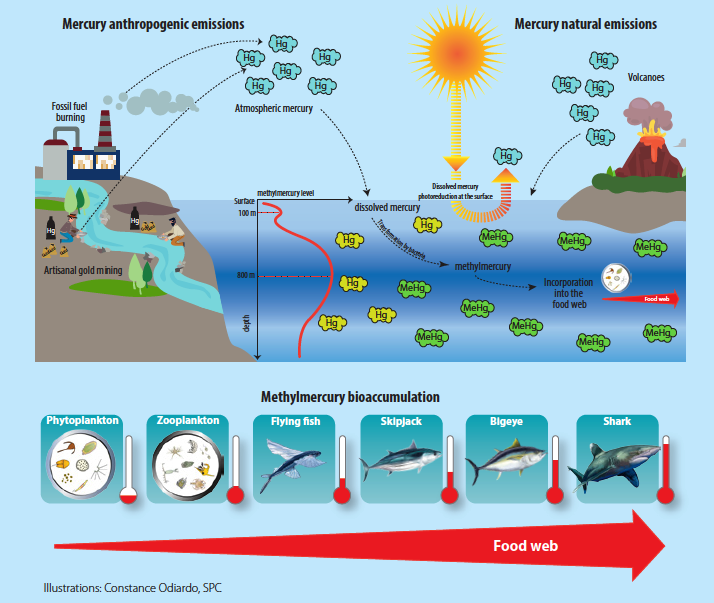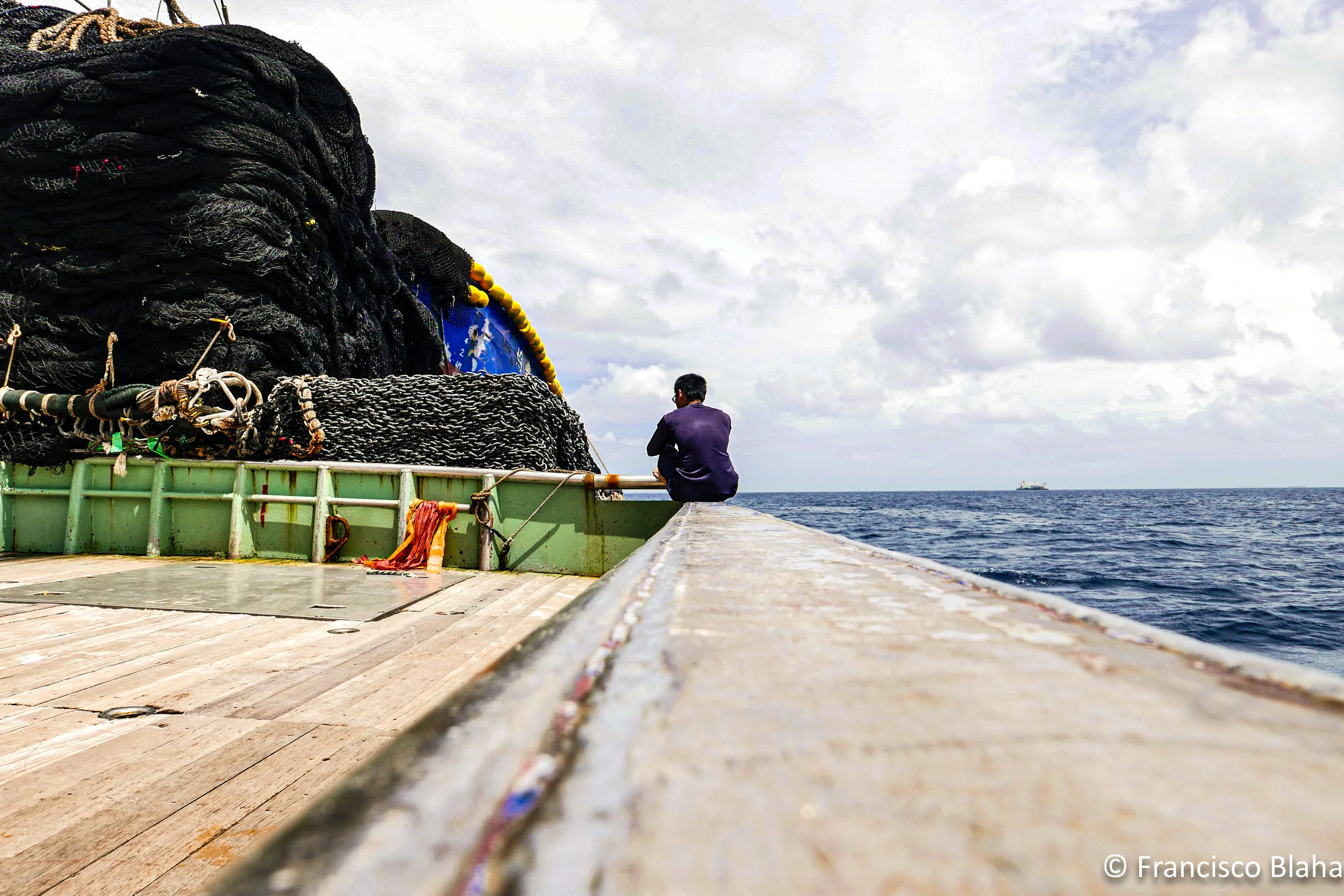Would be impossible to measure for me, but I’m sure that proportionally we here in the pacific Islands put way mere resources (as a % of our GDP) that the rich countries that normally come on top. Furthermore many use publicly available data, which is normally difficult to small countries to publish when sometimes there is not even capacity to update their websites. Furthermore, the rankings can be then used against countries than by a myriad of factors can’t really do better unless a total change in their circumstances is in place.
This time is different… since among the authors I have 3 friends whose quality of work I admire… Gilles Hosch, Brad Soule and Charles Kilgour, they have produced this very interesting paper: Any Port in a Storm: Vessel Activity and the Risk of IUU-Caught Fish Passing through the World’s Most Important Fishing Ports . The way I see it… is an exploration of the intrinsic and extrinsic risk of IUU fish passing through the world’s most important fishing ports and the drivers of this risk.
Which in turn give guidance into where to put efforts into the effective implementation of Port State Measures, an area I’m working extensively with FFA, FAO and more importantly the Marshall Islands government. I say this because the paper identifies Majuro as the 2nd busiest port in the world (after Bussan) based on number of foreign vessel visits (1168) and the 1st in the world in terms of foreign fishing vessel hold size (943,000 m3), which is not surprisingly since we have mostly big Purse Seiners coming over here on weekly basis.
But as an example of my criticism of this type of work… even if it is minimal in the bigger scheme… the top 3 port states in my part of the world, as the ones with the lowest level of risk are Vanuatu, Cook Islands and NZ… Which sound great for them… but then there have been no commercial landings by foreign fishing vessels in Port Vila (Vanuatu) since 2014 (in the meantime Vanuatuan vessels are well know for the lack of control on them visit all port in the world and are involved in the biggest amount of transhipments at sea). The port in Rarotonga (Cooks) barely gets foreign fishing boats visits because is very small and with limited exports logistics. While NZ has some of the most stringent PSM in the world… Yet of course, what they say is true, if you have no vessels coming to your port at all… you risk is very low… even if you have no inspectors at all in to receive them… but to be fair, the authors recognise these type of issues in the discussion. While on the other side, ports that are busy and put WAY more effort that Vanuatu for example can be faced with “unwanted scrutiny” by international groups or NGOs, just because they are lower in the ranking.
The paper goes into some rigorous statistical appraisals which is always good, and recommend you downloaded and read it from here. I just quote some parts I found relevant and I particular I like the conclusions and recommendations, specially this one: Port States should publish vessel movement data on port authority websites (based on physical vessel monitoring routines) in a format that can be readily used (e.g. as a downloadable spreadsheet). And enabling this (perhaps not coincidentally), is among my work objectives for this year here in RMI as we prepare to access PSMA .
Abstract
Like previous studies it has attempted to rank ports and States based on landings and vessel visits reported by governments by using Automatic Identification System (AIS) positional data transmitted by fishing and fish carrier vessels to identify the locations of ports and rank them based on the frequency of visits by foreign flagged and domestic-flagged vessels. It advances our thinking in that (i) the analysis includes an estimation of the hold capacity of fishing vessels and is therefore able to rank ports based on the total hold capacity of vessels visiting them and (ii) the profile and the frequency of vessel visits inform an assessment of the relative risks between different ports, and the implications for the implementation of the Port State Measures Agreement (PSMA). The study also assesses the accuracy and utility of AIS-derived data for determining IUU risk globally for all ports, notably by cross-referencing its findings with those of other studies.
The study develops a broad suite of indicators that quantify and aggregate the AIS-derived port visit information in conjunction with published and publicly available policy and regulatory information drawn from other sources, such as the compliance record with binding port State measures of regional fisheries management organizations, to raise a global port State IUU Risk Index. The comparison of achieved risk scores with national income, levels of corruption, and geography provides insights into factors driving (aggravating) or modulating (mitigating) risks of IUU-caught seafood passing through a Nation’s fishing ports, and supports a view that States with weaker governance also face higher odds of visits by vessels likely to have engaged in IUU fishing (i.e. higher external risks).
Based on an in-depth assessment of 14 individual ports globally, appended as a supplement to this paper, the study finds that overall, and with the possible exception of mandatory advance request procedures for entering ports, the implementation of key provisions of the 2009 PSMA remains severely lacking. The two main areas for improvement are the posting of publicly available PSM-related information on national and/or FAO portals, and the formal designation of ports.
The Objective of the paper is to Assess risk of illegal fish passing through the world’s fishing ports & assess drivers such as Risk (probability of IUU-fish passing through ports of given port States) and have a Qualitative component - risk scores serve to rank States and/or world regions across this study, yet acknowledging that it does neither embody a concise measure of probability, nor of actual incidence.
This paper explores these issues in order to gain a better understanding of port State-related dynamics (numbers of ports, amount of traffic, etc.), port State exposure to IUU risks, and perceived performance in combatting IUU fishing.
The purpose of this study is twofold. Firstly, to assess the potential for using (remotely collected) Automatic Identification System (AIS) data to identify and characterize fishing port activities, thus enabling a possible long-term, cost- effective monitoring tool. Secondly, to establish how risk assessment methodologies can be applied to estimate IUU risks associated with port States and fishing ports, based upon a suite of internal and external indicators that are used to build a Port State IUU risk index made of 3 components: internal risk, external risk, and overall (total) risk.
Conclusions
This study firmly cements the value and utility of AIS (and its resulting public-source data) in the domain of fisheries monitoring, control and surveillance. This has been the preserve of VMS for decades, a satellite-based communication system of which the resulting data are generally richer, better quality, and largely publicly unavailable. AIS technology has reached a degree of maturity and adoption which allows stakeholders to take it to the next level, although it is important to keep in mind the limitations of the technology; in this context by aiming it specifically at IUU-related risk analysis to inform monitoring, law enforcement and capacity development endeavors. This type of analysis could be made more robust by incorporating VMS data, as well as new forms of vessel tracking such as GSM-based reporting tools for small, inshore vessels – noting that the majority of the world’s fishing vessels are mainly small-scale and do not carry transponders.
It is possible to determine the locations and identities of global ports important to the industrial fishing industry using AIS data if it is properly layered with other sources and a comprehensive methodology for identifying port visits is used. A careful methodology is critical to this type of analysis to account for some of the inconsistencies of satellite-derived AIS data and the particular and diverse geographies of different ports. However, there will always be some abnormal results in this type of global analysis unless all data are manually reviewed, as it is not possible to develop an algorithm that accounts for the unique circumstances of every port in the world. Without synthesis with other sources (especially identity and hold capacity), AIS data is unlikely to produce these results for fishing vessels and fish carrier vessels.
Most of the publicly available global port information, especially the location and names of ports, is incomplete, and currently insufficient as a starting point for this type of analysis. There were major gaps in the knowledge of known world port locations used by major fishing fleets that the study had to fill. By using AIS-derived port locations, it is possible to identify “visits” by fishing vessels and carrier vessels to specific ports. Given the focus of the study on informing implementation of the PSMA, it is notable that the analysis was able to identify and associate over 91% of port visits by foreign-flagged vessels with ports and anchorages that were defined through this study. When only foreign-flagged vessel visits are considered the names and relative rankings of the identified ports are familiar to those knowledgeable with the global fishing industry.
There are differences in the mandatory use of AIS by fishing vessels as well as the ability of satellites and terrestrial antenna networks to record transmissions that affect any global analysis. The discrepancies within AIS positional and identity information, both intentional and unintentional, add another layer of difficulty and reduce the potential data available for analysis.
The risk analysis – rooted in both AIS and AIS-independent data – show that AIS data can be combined with data from other sources to build useful indicators. In this study, many indicators with an AIS component also had an AIS-independent component, turning them into powerful hybrid indicators; the average governance index of foreign vessels’ flag States visiting ports is one such example. Other indicators were either fully AIS, or fully non-AIS based, but worked in unison to produce relevant IUU risk scores in their respective internal and external components.
The port State IUU risk analysis allowed for the identification of major regions and major fishing nations where high port State IUU risks prevail, and where – specifically with regard to regions – positive trends of improving risk mitigation with improving national incomes would seem to apply as the general rule, but with the notable exception of Asia and Near East. The methodology used is capable of analyzing and identifying national, regional and global trends – through the use of weighted indicators and resulting risk scores – that allow a deeper understanding, not only of how IUU risk is distributed, but also how it would seem to evolve along gradients such as national income or the quality of governance.
In the same vein, the study established that the quality of governance – using Transparency International’s Corruption Perceptions Index – of a port State is the strongest structuring factor that determines the magnitude of both its internal and external risks to IUU exposure. For countries with high levels of endemic corruption/weak governance, this implies that focusing on the improvement of PSM, in the absence of concomitant improvements in governance in general, is unlikely to generate substantial results.
While the study finds important differences between regions in terms of IUU risk mitigation and risk exposure, it also shows that every region harbors weak and strong performers. The study finds that for a port State being part of a given income group, a given region, having a particular CPI score, or receiving visits from particular types of fleets, is never sufficient to confidently predict its performance in the domain of PSM – owing to the wide scatter in data.
The ‘deep-dive’ analysis of fourteen individual ports, published separately as a supplement to this paper, led to the conclusion that a lot of progress remains to be achieved in the domain of translating key PSMA provisions into national practice – starting with the designation of ports and the publicly available information accompanying these port State measures. In general terms, the study found that national PSMA- or PSM-related information has been very hard to locate in all cases and that publicizing of PSM information, by individual States and by FAO, as provided for in the PSM Agreement, is severely lacking. This lack of public information also limits the depth of analysis that may be achieved by studies such as this one when looking into the performance of individual ports.
That analysis also found that individual ports do not necessarily reflect the performance of their countries, nor their region – except by chance – implying that substantial variation in the performance between individual ports of the same country is to be expected as a rule, rather than an exception.
Recommendations
The following recommendations are derived from results and conclusions, and ordered by specific domain first, and by target audience next.
For AIS-related work in this domain
National authorities should consider requirements that make AIS as reliable as VMS for determining compliance. These may include requiring tamper-proofing to prevent the manipulation of position and identity. This may enable greater use of AIS and other tracking technologies for fisheries control that is more cost effective than traditional VMS.
Countries not having done so should publish national registries, update identity information associated with their vessels’ IMO numbers, and provide vessel data for inclusion in FAO’s Global Record of Fishing Vessels, Refrigerated Transport Vessels and Supply Vessels, in order to enable a greater understanding of the legal standing of vessels operating in given areas. This should include the MMSI for all authorized vessels required to have AIS.
Given potential current and/or future resolutions regulating effort, RFMOs and States should collect and publish vessel hold capacity data. While creating transparency and improving capacity knowledge at RFMO and State levels, this would also strengthen the type of analysis presented in this study.
The number of terrestrial AIS receiver networks should be expanded, to ensure greater port coverage of AIS data in high traffic areas. This will increase processing requirements.
Flag States should mandate the use of AIS on fishing vessels and carriers leaving their waters.
For port and flag States
Flag and port States should sanction the intentional or unintentional transmission of false identity and/or positional AIS data. This is important for safety of life at sea as well as for compliance monitoring efforts and studies such as this one. (go our FFA VMS!)
Port States should publish vessel movement data on port authority websites (based on physical vessel monitoring routines). Such data should be kept in a format that can be readily used (e.g. as a downloadable spreadsheet), with the port of Las Palmas presenting the best practice case identified in this study. (on our work-plan for this year)
Port States not having done so to date should plan for the formal designation of their ports and ensure robust prior notification and authorization regimes are put in place. (done for the last year at least)
Port States having ratified the PSMA should ensure that their PSM-related information is submitted to FAO for public hosting of the relevant information – including on designated ports. (after signing)
Port States should develop an easy-to-locate national PSMA-themed web portal providing third party access to a comprehensive set of resources regarding port State rules, designated ports, rules of port entry, forms, and contacts. (goes with recomendation #2)
Port States should consider the use of AIS, among other tools, to actively monitor sections of known ports frequented by fishing vessels and fish carrier vessels that may not be part of current compliance plans. (go our FFA VMS!) and we see them from our window)
Port States should consider the use of AIS, among other tools, to identify stopping events outside of known ports that may indicate attempts to evade inspection. (go our FFA VMS!)
































